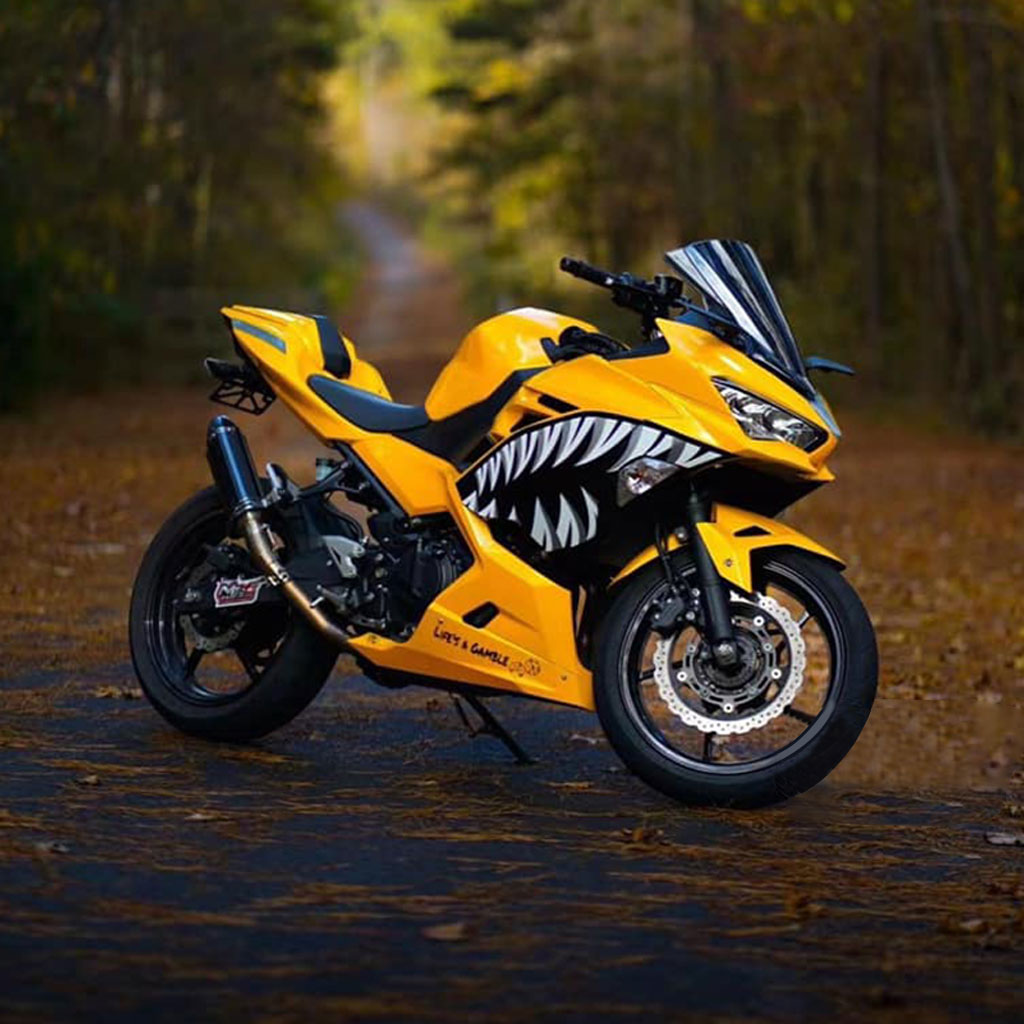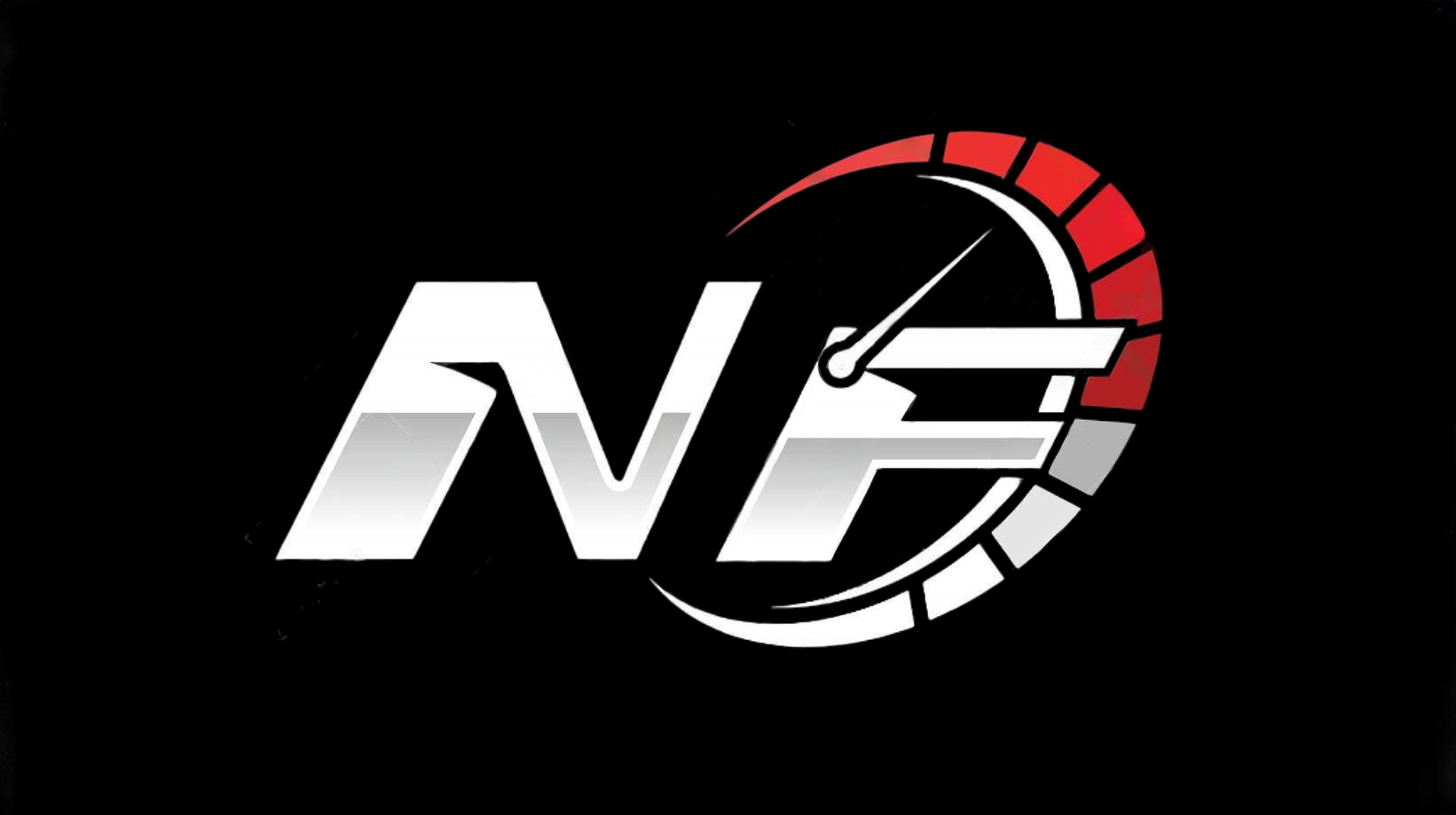Why Fairings Are Essential for Modern Motorcycles
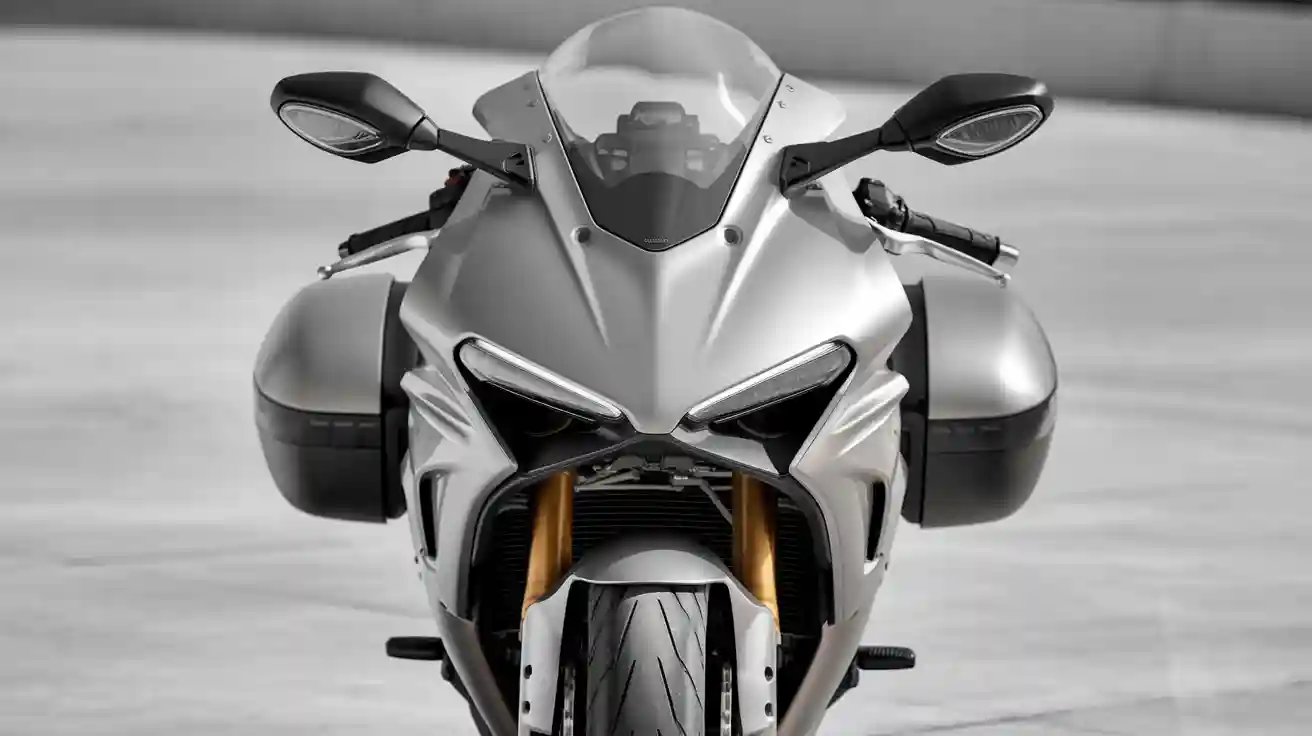
You see a motorcycle on the road and wonder, what is a fairing motorcycle? Fairings shape the look and function of your ride. When you add fairings to your motorcycle, you improve aerodynamics and gain better control at high speeds. Fairings shield you from wind and debris, making each ride safer. Many riders choose a fairing because it boosts comfort and style. The right fairings can change how your motorcycle feels and performs. Riders often find that fairings give their motorcycle a modern edge.
Fairings help you cut through the air, reduce drag, and enjoy a smoother ride.
What Is a Fairing Motorcycle?
Definition of a Fairing
When you ask, "what is a fairing motorcycle," you look at a bike with a special shell or cover over its frame. This shell, called a fairing, changes how the motorcycle moves through the air. According to experts, a fairing is a smoothly curved piece that covers sharp corners or sudden changes on a surface. On a motorcycle, this means you see smooth, flowing lines instead of sharp edges. These curves help air move around your motorcycle without causing extra drag or turbulence.
Industry standards describe a motorcycle fairing as a shell placed over the frame, especially on racing or sport bikes. You find this design helps deflect wind and cut down on air drag. When you ride a motorcycle with a fairing, you notice less wind hitting your body. This makes your ride smoother and more stable. The fairing also gives your motorcycle a modern and sleek look.
Core Purpose of Fairings
You might wonder why fairings matter so much. The main job of motorcycle fairings is to improve how your motorcycle moves and feels on the road. Here are the core purposes of fairings:
- Fairings boost aerodynamics. They help your motorcycle cut through the air, which means you use less fuel and can go faster with less effort.
- Fairings protect you from wind, rain, and flying debris. You stay safer and more comfortable, even on long rides.
- Fairings reduce rider fatigue. When less wind hits your body, you do not get tired as quickly.
- Fairings shield important parts of your motorcycle, like the engine and radiator. This protection helps your bike last longer.
- Fairings give you more space for gadgets. You can add radios, navigation systems, or other accessories.
- Fairings let you customize your motorcycle. You can choose different styles, colors, and shapes to match your taste.
Tip: If you ride at high speeds or travel long distances, a fairing can make your ride much easier and safer.
Modern motorcycle fairings use strong, light materials like ABS plastic, fiberglass, or carbon fiber. These materials help keep your motorcycle light but tough. You also find that fairings come in many shapes and sizes. Each type offers a different level of protection and style. When you choose a motorcycle fairing, you pick the one that fits your needs best.
When you see a motorcycle with a fairing, you know it is built for better performance, comfort, and style. Now you can answer the question, "what is a fairing motorcycle," with confidence.
Main Types of Motorcycle Fairings
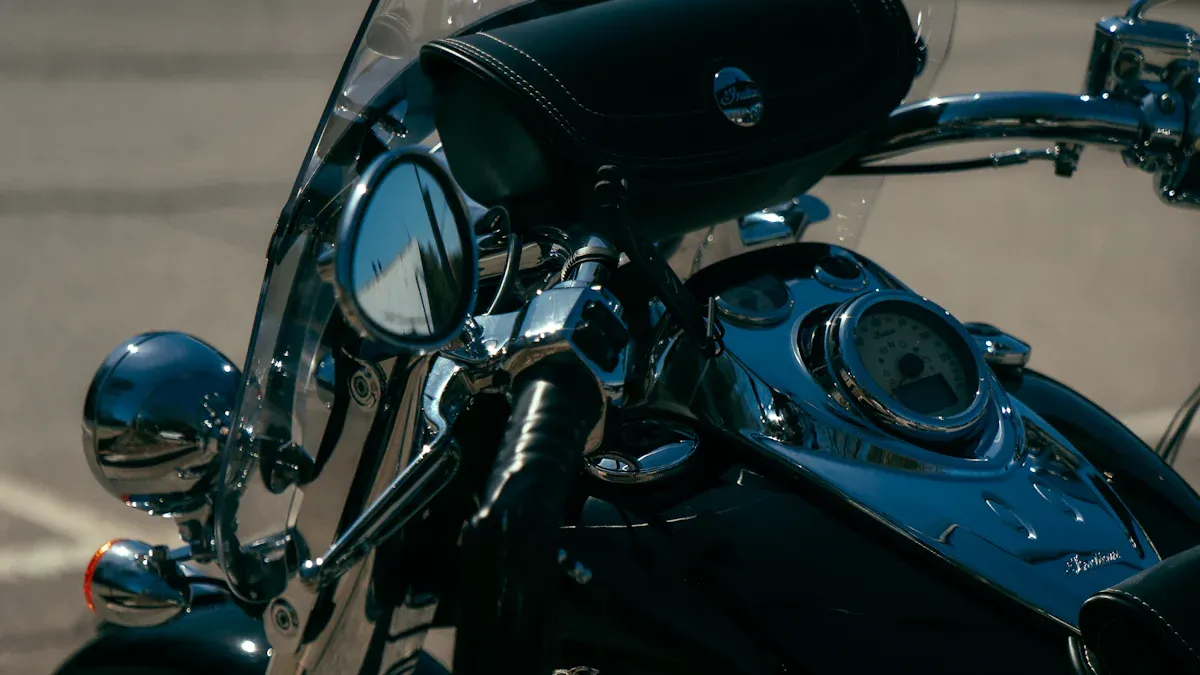
When you look at motorcycle fairings, you find several types that each serve a unique purpose. Understanding the main types of fairing helps you choose the best option for your riding style and needs. Here are the most common types of motorcycle fairings you will see on the road today.
Full Fairing
Full fairings cover most of your motorcycle’s frame. You get maximum protection from wind, rain, and debris. This type of fairing usually includes both the upper and lower parts of your bike. You often see full fairings on sport and touring motorcycles. Riders choose full fairings because they improve aerodynamics and help you ride faster with less effort. These fairings also reduce rider fatigue and boost fuel efficiency. Modern full fairings use lightweight materials like ABS plastic, fiberglass, or carbon fiber. You notice better stability, especially in crosswinds, and a sleek, modern look. Some full fairings even have small winglets that can improve engine power output.
Note: Full fairings became almost standard on sport and touring motorcycles in the 1980s and 1990s. They remain popular for comfort, speed, and style.
Half Fairing
Half fairings cover only the upper part of your motorcycle. You get protection for your upper body, windshield, and headlight area. The lower parts of your bike stay exposed. This design gives you a good balance between wind protection and airflow. You stay cool while riding, and you still get some shield from the elements. Half fairings make maintenance easier because you can reach the engine and exhaust without removing large panels. Many riders like half fairings for their sporty look and practical benefits. You find them on bikes that need both style and usability.
- Half fairings protect your chest and face.
- They allow air to flow to your legs and engine.
- You get easier access for repairs.
Quarter Fairing
Quarter fairings, sometimes called bikini fairings, are the smallest types of fairing. They mainly cover the headlight and instrument area. You get minimal wind protection, but you keep a classic and lightweight look. Quarter fairings work well if you want some wind deflection without the bulk of full or half fairings. Many riders use quarter fairings on cruisers and custom motorcycles. You can fit different windscreen sizes to match your needs. Quarter fairings add style and a bit of comfort, making them a favorite for riders who want a simple upgrade.
| Type of Fairing | Coverage Area | Best For | Key Benefit |
|---|---|---|---|
| Full Fairing | Upper & Lower Frame | Sport/Touring Motorcycles | Maximum protection |
| Half Fairing | Upper Frame Only | Sporty/Practical Bikes | Balance of airflow/protection |
| Quarter Fairing | Headlight & Instruments | Cruisers/Custom Bikes | Lightweight & stylish |
You now know the main types of motorcycle fairings. Each type offers different levels of protection, style, and comfort. Choose the one that fits your riding needs best.
Bikini Fairing
You might notice that bikini fairings are one of the smallest types of motorcycle fairings. This style covers only the area around the headlight and sometimes a small part of the handlebars. Bikini fairings give your motorcycle a sporty look without adding much weight. You get a little wind protection, which helps on short rides or city trips. Many riders choose this type because it keeps the motorcycle light and easy to handle.
Bikini fairings work well if you want a simple upgrade. You can install them quickly, and they fit many types of motorcycles. Riders often pick this style for custom bikes or retro models. You still feel the wind, but the fairing helps reduce some of the pressure on your chest. If you want a classic look with a touch of modern style, a bikini fairing is a good choice.
Tip: Bikini fairings are great for riders who want a balance between style and function without the bulk of larger motorcycle fairings.
Dustbin Fairing
Dustbin fairings stand out among all types of fairing because of their unique shape. You see these fairings wrap around the front of the motorcycle, almost like a nose cone on an airplane. In the 1950s, race teams used dustbin fairings to cut down on aerodynamic drag and boost straight-line speed. These motorcycle fairings changed how racing motorcycles looked and performed.
However, dustbin fairings had problems with stability in strong side winds. At famous races like the Isle of Man TT, riders found these fairings could make the motorcycle hard to control. Because of safety concerns, the International Motorcycling Federation banned dustbin fairings in 1958. This ban stopped full streamlining in racing for many years. Today, you might see dustbin fairings on custom builds that honor this important part of motorcycle history.
Belly Pan Fairing
Belly pan fairings cover the lower part of the motorcycle, just below the engine. You often see this type on sport bikes and racing motorcycles. The main job of a belly pan fairing is to smooth the airflow under the bike. Scientific studies show that belly pan fairings can reduce aerodynamic drag by about 7.7% to 14% at higher speeds. This means your motorcycle moves faster, uses less fuel, and feels more stable.
Besides improving speed, belly pan fairings help protect the engine and other parts from dirt and debris. You also get a cleaner look for your motorcycle. While this type of fairing does not offer much impact protection, it does make your ride more comfortable by deflecting wind away from your legs. If you want better performance and a sleek appearance, consider adding a belly pan fairing to your motorcycle.
Key Benefits of Fairing
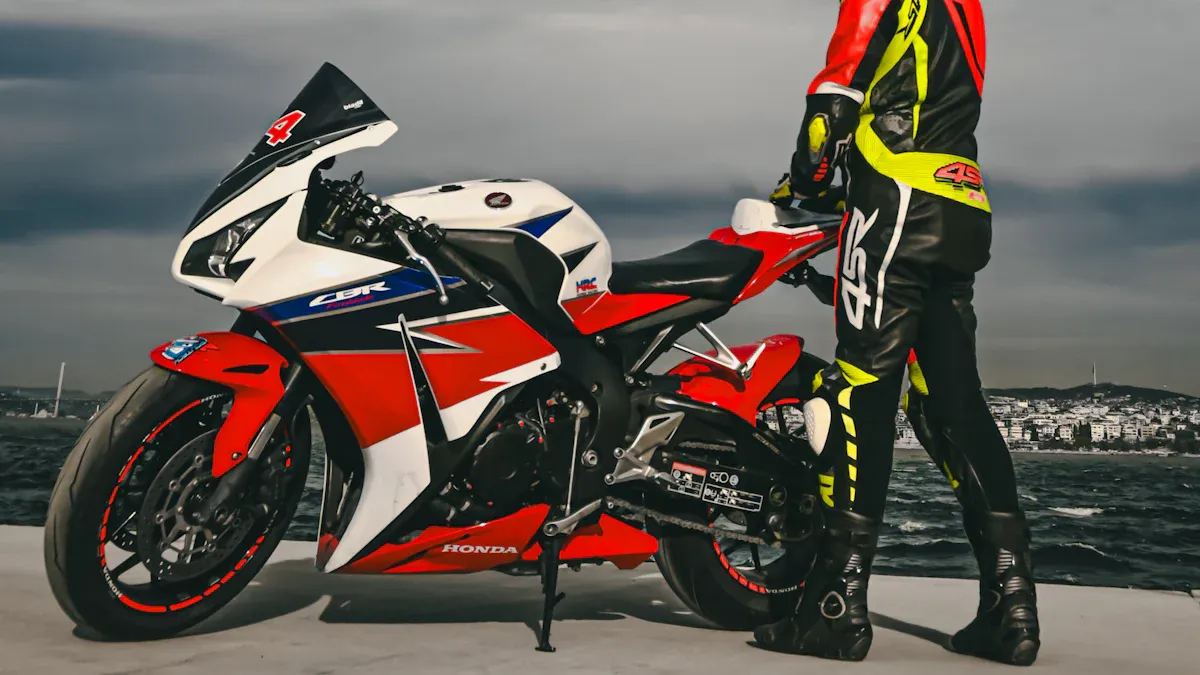
Improved Aerodynamics
You feel the difference as soon as you ride a motorcycle with a fairing. The main benefit comes from improved aerodynamics. Fairings help your motorcycle move through the air with less resistance. When you ride at higher speeds, the shape of the fairing cuts down wind resistance and lets you go faster with less effort. Wind tunnel studies on a 600 cc Supersports motorcycle show that optimizing the fairings can reduce aerodynamic drag force by about 10%. This means you use less fuel and get more speed from the same engine power.
Fairings give you aerodynamic benefits by smoothing the airflow around your motorcycle. You notice enhanced aerodynamics when you ride on highways or open roads. The fairing directs air over and around your body, which leads to reduced drag and better stability. You also experience aerodynamic efficiency, which helps you maintain higher speeds without feeling like you are fighting the wind. These aerodynamic benefits make your ride smoother and safer.
Tip: If you want to enjoy higher speeds and better fuel economy, choose a motorcycle with a well-designed fairing for maximum aerodynamic benefit.
Rider Protection
Fairings do more than just improve speed. They offer important protection for you and your motorcycle. When you ride, you face wind, rain, bugs, and flying debris. A fairing acts as a shield, giving you wind protection and keeping your body safer. You also protect your hands, chest, and face from harsh weather and road hazards.
Studies show that motorcycles with fairings and windshields are less often involved in accidents. This happens because fairings make your motorcycle more visible and many riders with fairings have more experience. Here are some key points about protection:
- Fairings increase your visibility on the road.
- You get better wind protection for your upper body.
- Fairings help shield your engine and other important parts from debris.
- You stay safer in bad weather or on long trips.
You also get functional advantages from fairings. They protect your motorcycle’s engine and electronics from dirt and water. This protection helps your bike last longer and saves you money on repairs. The benefits of fairing go beyond just comfort—they help keep you and your motorcycle safe.
Enhanced Comfort
You notice enhanced comfort right away when you ride with a fairing. The fairing blocks strong wind from hitting your body, which means you do not have to fight wind resistance all the time. This makes long rides much easier. Fairings balance air pressure around your motorcycle, so you feel less buffeting and shaking. You get a smoother ride, even when the wind picks up.
Many riders report that fairings reduce wind fatigue. You do not have to grip the handlebars as tightly, and your back and arms do not get as tired. Here are some ways fairings improve comfort:
- Fairings provide wind coverage for your face and chest.
- You feel less muscle strain in your hands, back, and core.
- Fairings reduce noise and buzzing sounds from wind buffeting.
- You stay warmer in cold weather and cooler in the summer by controlling airflow.
Note: Fairings help riders with musculoskeletal issues by reducing wind strain and making every ride more enjoyable.
You get a quieter, more comfortable ride, especially at highway speeds. Fairings help you ride longer without feeling worn out. If you want to enjoy every mile, the comfort benefits of fairing make a big difference.
Better Performance
You want your motorcycle to deliver the best possible ride. Fairings help you reach that goal by offering improved performance in several ways. When you add a fairing to your motorcycle, you notice the difference right away. The fairing streamlines the airflow around you and your bike. This reduces aerodynamic drag and lets you go faster with less effort from the engine.
- Fairings reduce drag by smoothing the air that moves around your motorcycle and your body. You use less throttle to reach higher speeds.
- You get better fuel efficiency because the engine does not have to work as hard. This means you save money on gas, especially on long rides.
- Fairings balance air pressure around your bike. You feel more stable and in control, even when the wind picks up.
- Improved stability leads to better handling. You can take corners with more confidence and enjoy a smoother ride on highways.
- These benefits apply to both racing bikes and everyday motorcycles. You get improved speed, fuel economy, and less rider fatigue.
Many riders see real-world gains after installing fairings. Some models show up to a 5% improvement in aerodynamic efficiency. Carbon fiber fairings can reduce your motorcycle’s weight by 5–10 pounds. This lighter weight helps you accelerate faster and handle your bike with more precision. Riders often report less helmet buffeting and wind fatigue, especially at freeway speeds.
Note: A track rider once reduced lap times by 1.2 seconds after switching to a full carbon fiber race fairing kit. This shows how much improved performance you can get from the right fairing.
Fairings also protect your engine. Revised vents in the fairing help cool the engine better, which can extend its life. Some fairings even include winglets that create downforce. This gives you more traction and stability at high speeds and in corners. You get a safer and more enjoyable ride.
Fairings do more than just look good. They give you real, measurable benefits in speed, handling, and comfort. If you want improved performance from your motorcycle, a fairing is a smart choice.
Aesthetic Appeal
You notice the look of a motorcycle before anything else. Fairings play a big role in shaping that first impression. Over the years, fairings have changed from simple racing parts to key style features. Advances in materials like ABS plastic and carbon fiber let designers create lighter, stronger, and more detailed fairings. These changes give motorcycles a sleek, aggressive, or even classic look, depending on your taste.
Fairings let you customize your motorcycle in many ways. You can choose from different colors, patterns, and shapes. Some riders add unique graphics, logos, or LED lighting to make their bike stand out. Custom fairings help you express your personality and make your motorcycle one of a kind. Many brands now offer web-based tools so you can design your own fairing before you buy.
Fairings also add value to your motorcycle. Buyers look for bikes that combine style with comfort and protection. A well-designed fairing can make your motorcycle more attractive and increase its market value. You get both performance and style in one package.
Consumer preferences for fairing design vary by region and riding style. Here is a quick look at what riders like around the world:
| Region | Consumer Preferences on Aesthetic Design of Motorcycle Fairings |
|---|---|
| Europe | Sleek, minimalist designs; lightweight materials like carbon fiber; premium, contemporary style. Brands like Ducati and BMW focus on streamlined fairings. |
| North America | Bulkier, rugged fairings with rich paint and chrome; customization is important. Harley-Davidson is known for iconic, modular fairings. |
| Asia (India) | Practical, maneuverable fairings with vibrant colors and graphics; appeals to younger riders. Brands like Bajaj Auto use diverse color schemes. |
| Global Sport Bike Enthusiasts | Aerodynamic, sharply contoured fairings for better performance. Yamaha and others focus on airflow-optimized designs. |
| Sustainability Trends | Growing demand for eco-friendly materials that look good and reduce environmental impact. |
Motorcycle fairings do more than protect you and improve performance. They help define your bike’s style and make it stand out in a crowd. When you choose a fairing, you shape both the look and the value of your motorcycle.
Are Motorcycle Fairings Necessary for Modern Motorcycles?
Fairings vs. Naked Bikes
You might wonder if every motorcycle needs a fairing. Many motorcycle enthusiasts enjoy both fairings and naked bikes. Naked bikes do not have a fairing, so you feel the wind and see the engine and frame. These motorcycles give you a raw and simple riding experience. Some riders like the lighter weight and easy maintenance of naked bikes.
Fairings, on the other hand, offer many advantages that you cannot ignore. Experts highlight several reasons why fairings are important for modern motorcycles:
- Fairings protect you and your engine from wind, rain, and debris. You stay safer and more comfortable in harsh weather.
- They improve aerodynamics, which helps with handling, acceleration, and climbing hills.
- Fairings give you extra storage space and let you customize your motorcycle’s look.
- Most racing and sport motorcycles come with fairings as a standard feature.
You see that fairings provide more wind protection and comfort, especially on long rides. Naked bikes may look cool and feel sporty, but you miss out on the extra protection and performance that fairings deliver. Many motorcycle enthusiasts choose fairings for daily commuting, touring, or racing.
Tip: If you ride at high speeds or in bad weather, a fairing can make your ride much safer and more enjoyable.
When Fairings Make the Most Difference
You notice the biggest benefits of fairings in certain riding conditions. When you ride on highways, fairings reduce aerodynamic drag and help you save fuel. You feel more stable and less tired because the fairing deflects wind away from your body. This wind protection makes a big difference on long trips.
Fairings also help you in cold or rainy weather. They block freezing winds and keep you drier by spreading water away from you and your gear. In hot weather, fairings reflect sunlight and reduce glare, so you stay cooler. If you ride a cruiser or touring motorcycle, you get even more comfort and safety from a fairing.
Motorcycle enthusiasts often choose fairings for these reasons:
- Fairings reduce turbulence and buffeting, giving you a smoother ride.
- They protect you and your motorcycle in accidents, especially at lower speeds.
- Fairings keep your engine and electronics safe from dirt and water.
You see that fairings are not just for looks. They give you real protection and improve your riding experience in many ways. For many motorcycle enthusiasts, a fairing is an essential part of a modern motorcycle.
How to Choose the Right Motorcycle Fairing
Consider Your Riding Style
You should always start by thinking about how you ride your motorcycle. Your riding style affects the kind of fairing you need. If you ride on highways or take long trips, you will want a fairing that gives you strong wind and weather protection. For city rides, you may only need a small fairing to block bugs and debris. Comfort and safety matter, too. A good fairing can reduce wind noise and make your ride smoother.
Here is a table to help you match your needs:
| Factor | What to Consider |
|---|---|
| Riding Frequency | Long trips need more wind protection; city rides need basic coverage. |
| Protection Needs | Think about wind, rain, and debris on your usual routes. |
| Comfort & Safety | Fairings can lower wind fatigue and shield you from weather and road hazards. |
| Customization Options | Choose colors, shapes, and features that fit your style and comfort needs. |
Tip: Always pick a fairing that matches your main riding habits. This helps you get the most comfort and protection.
Match Fairing Type to Motorcycle
Not every fairing fits every motorcycle. You need to check if the fairing matches your bike’s model and design. Some fairings work best with certain handlebars or frames. For example, a full fairing may fit a touring bike, but not a cruiser. Some brands make fairings just for specific motorcycles, which makes installation easier.
You should also think about how the fairing will look and work with your bike. The right fit gives you better performance and keeps your motorcycle looking sharp. If you want to add more features, look for fairings with extra customization options. These let you change the color, add lights, or even swap out parts for a new look.
Note: Always check with an expert or the manufacturer before buying a fairing. This helps you avoid problems with fit or function.
Material and Build Quality
The material of your fairing affects how long it lasts and how your motorcycle handles. ABS plastic is a popular choice because it is strong, flexible, and light. This material helps protect your engine and keeps your bike easy to handle. Fiberglass is another good option. It is tough and stands up well to weather and road damage. Both materials help keep your motorcycle light, which improves fuel efficiency.
You should also look at the build quality. Well-made fairings last longer and give you better protection. Some fairings use composite materials for extra strength, but these can be heavier and cost more. When you choose a fairing, think about how much you ride and what kind of roads you use. Good materials and solid build quality mean you will spend less on repairs and enjoy more time riding.
| Material | Features | Impact on Ride |
|---|---|---|
| ABS Plastic | Strong, flexible, heat-resistant, lightweight | Easy handling, fuel savings |
| Fiberglass | Durable, weather-resistant, lightweight | Good protection, stable ride |
Customization options in materials and colors let you create a fairing that matches your personality and riding needs.
Installation and Compatibility
When you install a motorcycle fairing, you want to make sure it fits your bike and works well. Choosing the right fairing starts with checking if it matches your motorcycle’s make and model. Fairings designed for your specific bike will fit better and look more natural. You also need to think about the material. ABS plastic, fiberglass, and carbon fiber each offer different levels of strength and weight. Pick the one that matches your riding style and needs.
Before you start, gather all the tools you need. A clean workspace helps you stay organized and avoid losing small parts. Here are some important things to remember:
- Always test-fit the fairing before you install it for good. This helps you spot any problems early.
- Use the right mounting hardware and avoid overtightening bolts. Too much force can crack the fairing.
- Take photos as you remove old fairings. These pictures help you reconnect wires and parts later.
- Choose fairings from trusted brands. Good quality means better fit and longer life.
- Protect your bike’s paint and surfaces with soft cloths during installation.
You can follow these steps for a smooth installation:
- Prepare your workspace and gather tools like screwdrivers, pliers, and a torque wrench.
- Disconnect the battery by removing the negative terminal first.
- Remove the old fairings, keeping all screws and clips in a safe place.
- Take photos of electrical connections and tricky spots.
- Gently detach the old fairings, watching for hidden fasteners.
- Test-fit the new fairings to check alignment.
- Install the new fairings, tightening bolts just enough to hold them securely.
- Reconnect any wires, using your photos as a guide.
- Inspect the finished job for gaps or stress points.
- Check your fairings often to make sure they stay secure.
Tip: Regular checks help you catch loose bolts or cracks early, keeping your ride safe and looking sharp.
Motorcycle fairings give you more than just a stylish look. You gain better aerodynamics, stronger protection, and a smoother ride. Experts agree that fairings help reduce wind resistance, keep you safer from debris, and even extend your engine’s life.
- You can pick from many types and styles to match your needs.
- New designs use lighter, stronger materials and offer more ways to customize your bike.
- Future fairings may include smart features and eco-friendly materials.
Choosing the right fairing can make every ride safer, more comfortable, and more fun.
FAQ
What is the main purpose of a motorcycle fairing?
You use a fairing to reduce wind resistance and protect yourself from debris. Fairings help your motorcycle move faster and keep you comfortable during long rides.
Can you install a fairing on any motorcycle?
You can install a fairing on most motorcycles. Always check if the fairing matches your bike’s make and model. Some fairings need special brackets or hardware for a secure fit.
Do fairings make your motorcycle safer?
Yes, fairings protect you from wind, rain, and flying debris. You stay safer and more comfortable, especially at higher speeds or in bad weather.
How do you clean and maintain a motorcycle fairing?
Use a soft cloth and mild soap to clean your fairing. Avoid harsh chemicals. Check for cracks or loose bolts often. Regular care keeps your fairing looking good and working well.
Will a fairing affect your motorcycle’s fuel efficiency?
You may notice better fuel efficiency with a fairing. The fairing reduces drag, so your engine works less to keep speed. This can help you save money on gas.
See Also
Essential Custom Fairings Every Bikegirl Should Own
Evaluating The Benefits And Drawbacks Of Motorcycle Fairings
Top Reasons To Choose Fairings For Your Yamaha R6
Comprehensive Guide To Understanding Motorcycle Fairings Today
